How to Temper Eggs
Eggs are an incredibly versatile ingredient – they can act as a binding agent in batters and doughs or while also leavening baked goods to provide an excellent airy texture. They can also provide a luxurious, silky smooth texture to custards, cream pies, flan and even savory dishes like avgolemono soup when they go through a process known as tempering.
Different than tempering chocolate, this process involves carefully adding a hot liquid to eggs to slowly raise their temperature without scrambling the yolks. Adding the hot liquid in small amounts while whisking dilutes the proteins in the egg while preventing them from clumping together, which creates a smooth base for a wide variety of sweet and savory treats. Although tempering eggs can be an intimidating step for bakers, the technique is deceptively simple and once mastered unlocks a world of decadent desserts.
We’ve included some pro tips along with our step-by-step guide below to help bakers of all skill levels learn this skill. For a demonstration of the technique, check out our how-to video here. If you’re interested in learning more about the science behind tempering eggs and how you can use it in your baking, read our deep dive on the topic here.
What You’ll Need:
- Heat-proof mixing bowl
- Egg yolks
- Whisk
- Cooking liquid (e.g. milk, broth, or stock)
- Medium pot
- Measuring cup or ladle
- Fine mesh strainer
Steps:
1. Bring your cooking liquid to a low simmer in a pot, stirring occasionally, then turn off the heat.
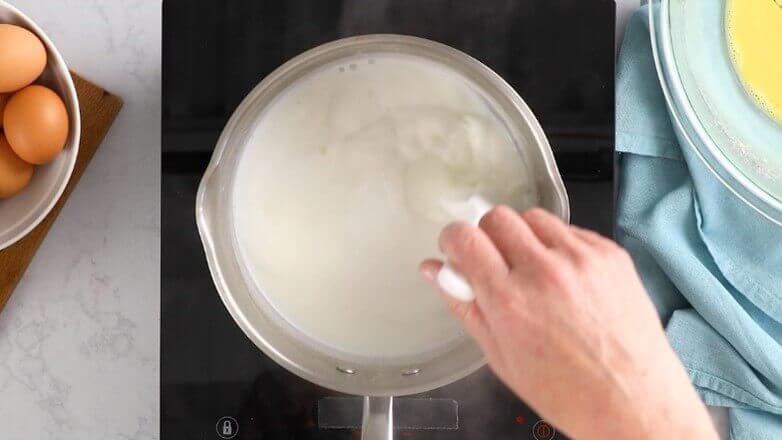
2. In a separate bowl, whisk together the number of eggs or egg yolks that are called for in the recipe until well combined.
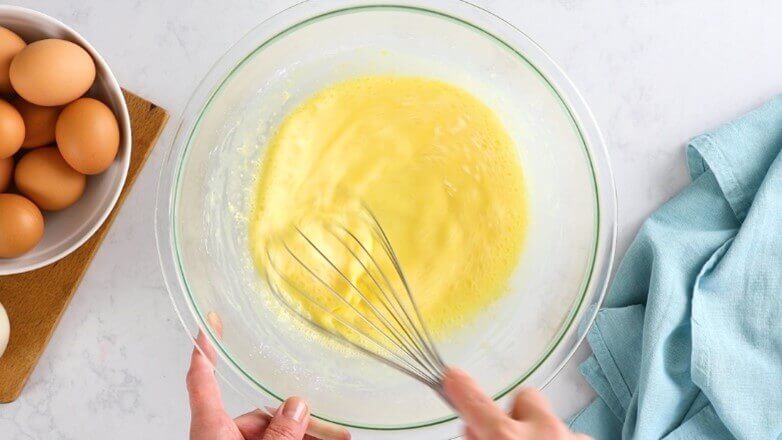
3. Using a measuring cup or ladle, slowly add around ½ cup of the hot liquid to the eggs while whisking quickly. Whisking while adding the liquid slowly prevents the eggs from getting cooked right away by the hot liquid and curdling.
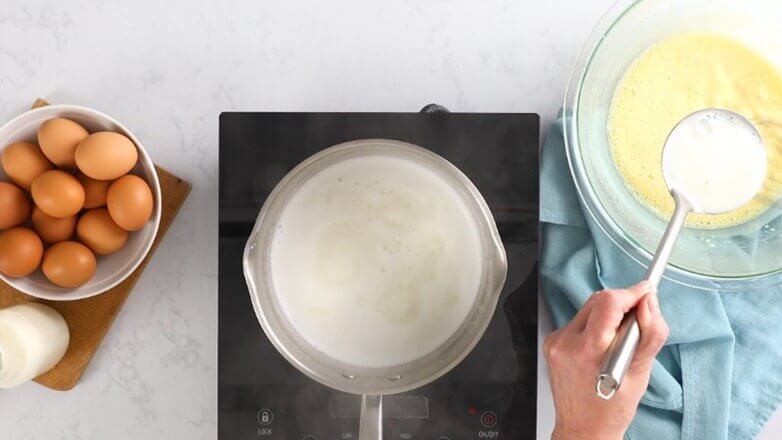
4. Continue slowly adding in the liquid while whisking until about half of the hot liquid has been incorporated.
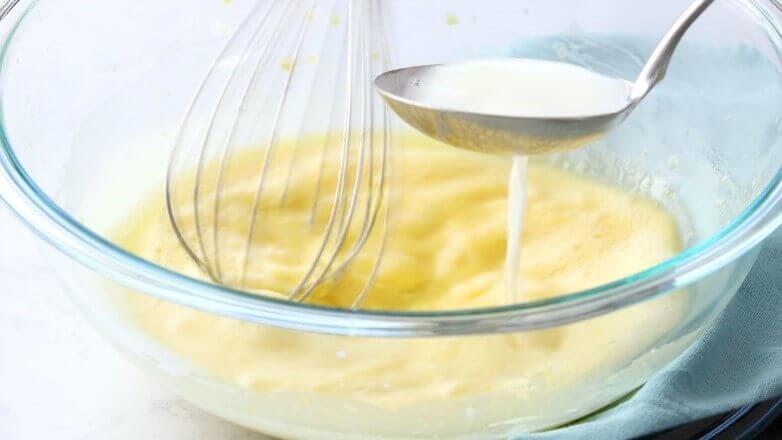
5. Slowly strain the egg mixture back into the pot of remaining cooking liquid.
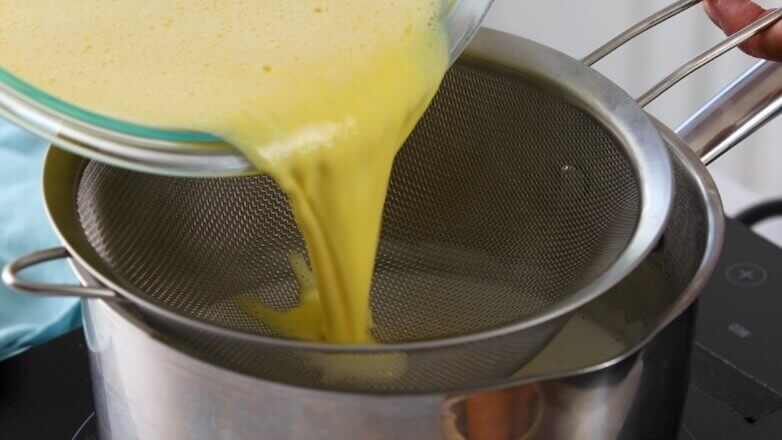
6. Once the eggs are fully combined in the pot, continue to stir or whisk until the desired consistency or temperature is achieved.
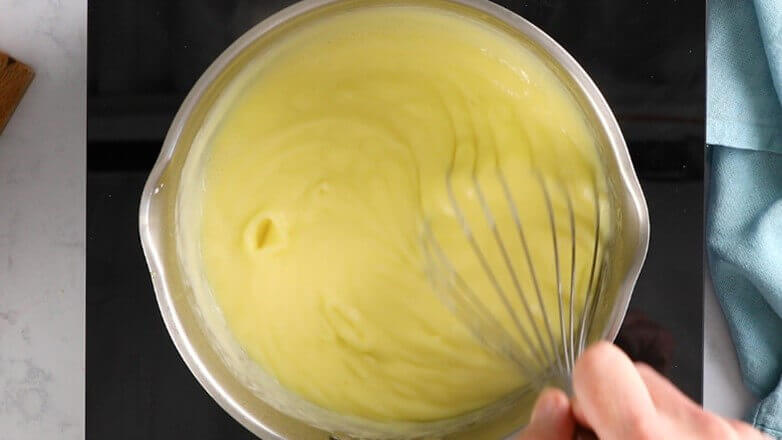
Pro Tips:
- Start with room-temperature eggs for the best results. Room temperature eggs are easier to separate, and they will be less likely to curdle when you combine the hot liquid with the yolks.
- Whisking the egg yolks together before adding the liquid ensures even cooking and smooth texture.
- In recipes that call for cornstarch and sugar to be added to the yolks, the starch and sugar acts as a buffer against the heat of the liquid ingredient and helps prevent curdling.
